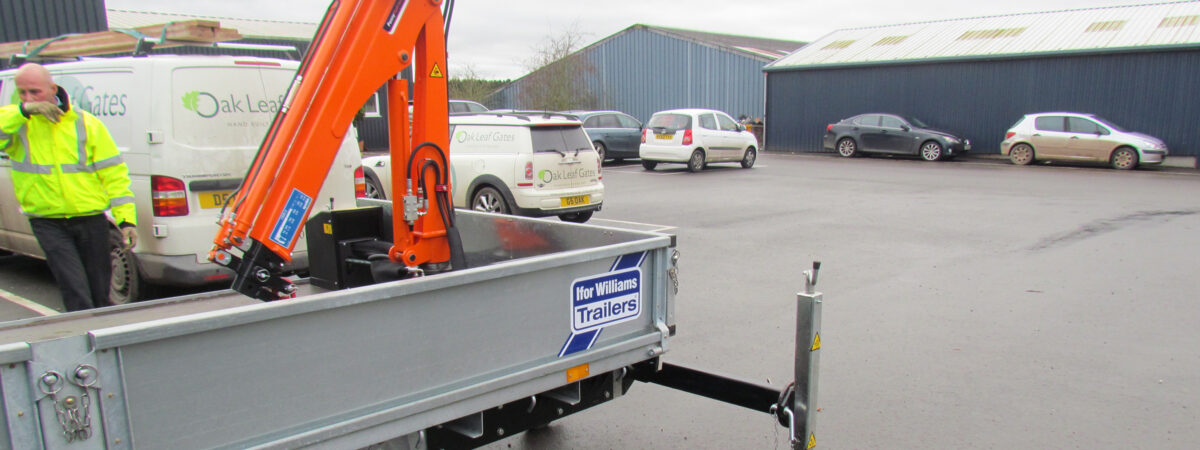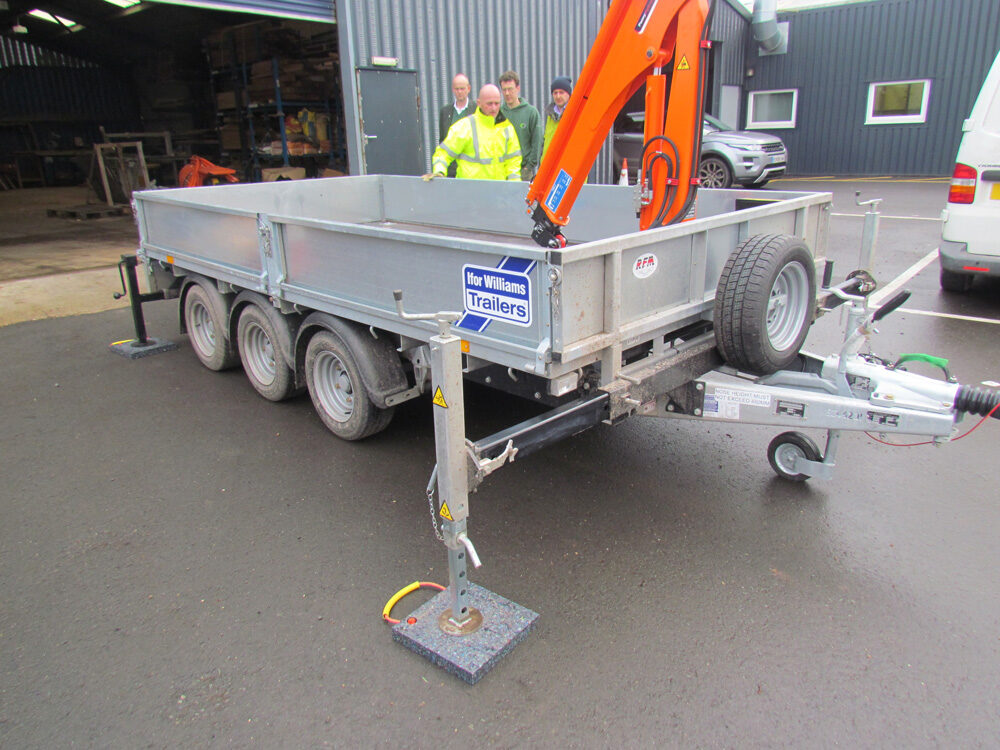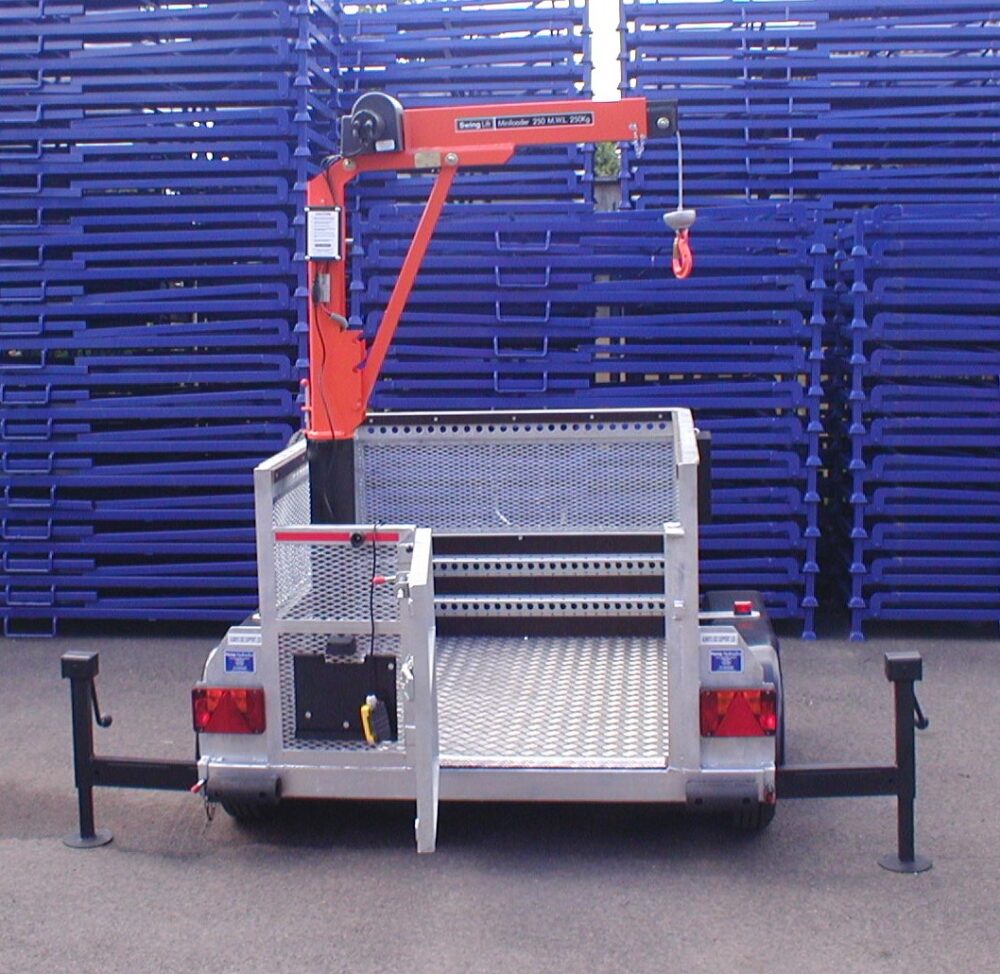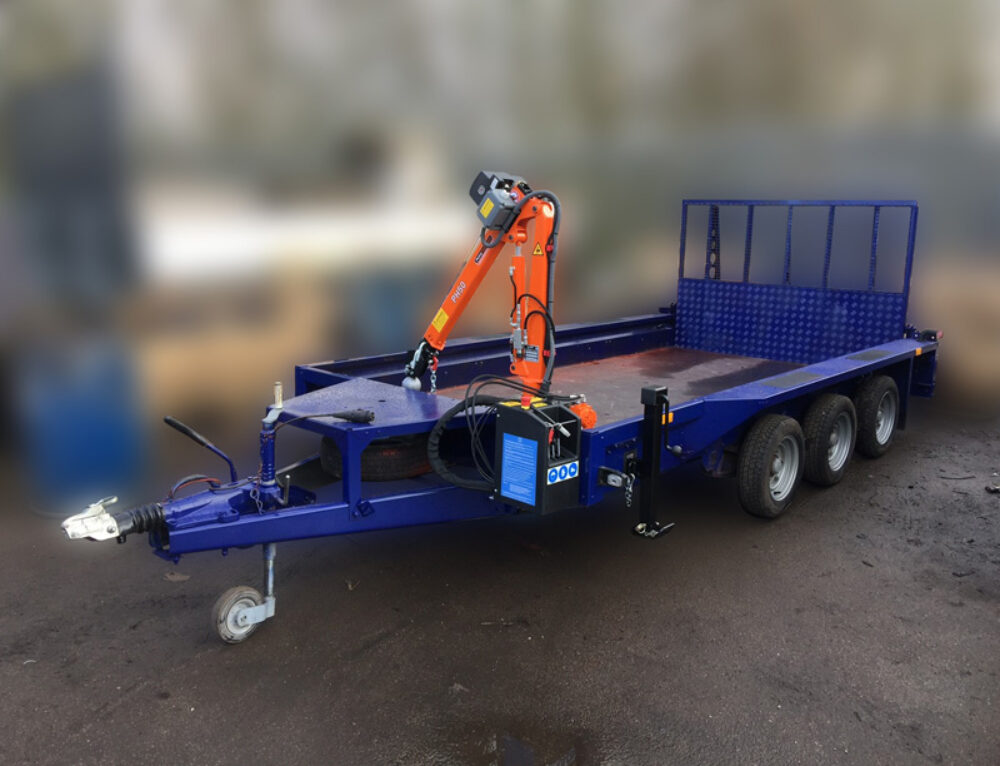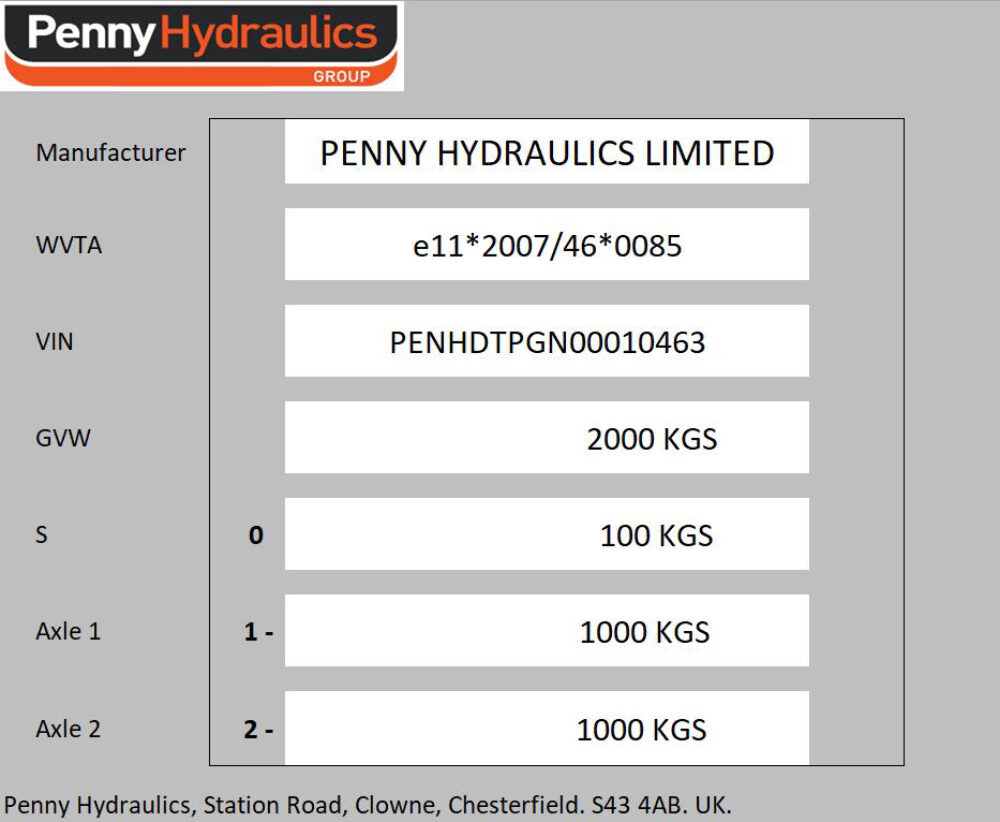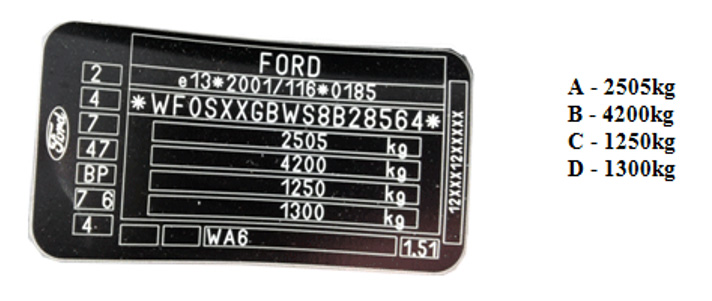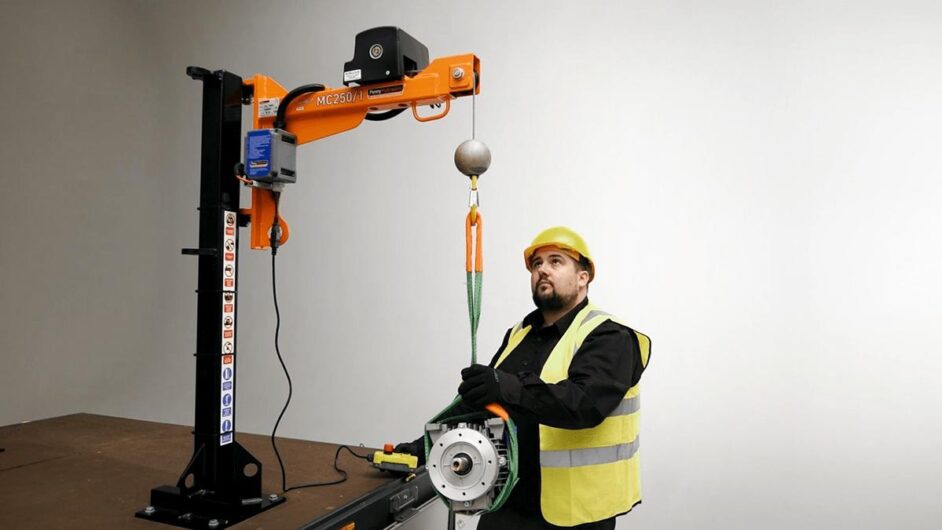Nose Weight.
Trailers are built to have a nose weight when empty to ensure stability. Adding a crane and support frame to the front of a trailer will generally take it above the permitted level for the hitch mechanism and towing vehicle. One way round this is to add equivalent counterbalance weights to the rear but this is expensive, takes up valuable payload and can make the trailer difficult to tow. Fitting the crane at the rear is more likely to be possible without adding extra weight to the trailer but all trailers are different and need to be assessed. The ideal position for a crane is mounted centrally.
Stability.
The trailer must not rely on the hitch or jockey wheel for stability when using the crane. Neither is designed for the sort of loads that may be imposed on them. Most crane and trailer combinations have two sliding support legs alongside the crane to go out on either side and also two more support legs that give stability at the opposite end of the trailer. This second pair of legs often just need to go to ground and may not need to slide out to the side. Some trailers with larger cranes will require ballast in the form of steel plates putting under the floor in the centre of the trailer to add stability. This will affect payload as well as cost.
How is the Crane to be Powered?
Large electric cranes require over 200 amps at peak load. Long cable runs from the front of a tow vehicle to the back of a long trailer will also use up significant energy. This can be offset to some extent by using heavy duty cables, but energy supply needs to be addressed. Are you going to fit a second deep cycle battery and if so, how will it be charged?
A better option for larger cranes is to fit a petrol-powered pump on the trailer although some electrical power will still be needed for safety circuits. This low power circuit is much easier to source from the tow vehicle but does mean that you cannot use the crane without the tow vehicle present. You may need to have a small battery on the trailer to make the whole unit self-sufficient.
Smaller cranes up to 1.0 tonne are more easily powered from the tow vehicle battery due to much lower energy requirements.
Operator Position.
In most cases there will need to be stops to limit the arc of the crane to a specified zone. This is not difficult, but you need to think about where you will be using the crane and where the operator will stand as they need to be in a safe place and not under the crane boom.
